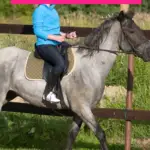A blue roan horse has a unique gene that makes its fur look bluish-grey. Blue roan horses are often confused for grey. However, the roan gene is easy to recognize when you know what to look for.
In this article, you will learn more about blue roan horses, the genetics of this stunning horse color, and why people love them. But first, some key facts about blue roan horses:
- 💰 Blue roans are 16.7% more expensive than other horses – our team determined that when other variables were equal, blue roans were priced 15-20% higher.
- 📊 2.5% of Quarter Horses are blue roan – When our team analyzed 4,475 Quarter Horse classified ads, only 124 listed the horse for sale as blue roan.
- 💎 Blue roan horses make up only about 30% of all roans. Most roan horses are 🍓 strawberry roans.
- 🛍️ Average list price of a blue roan horse is 10,951.00 – This compares to an average list price of 9,378.00 for all colors of Quarter Horses in 2023.
- 🏆 57% of all blue roan horses were listed for under $10,000 – 35% of blue roan horses are priced between $5,000 – $10,000 USD. This means multiple very-high-priced outliers influence the average price listed above.
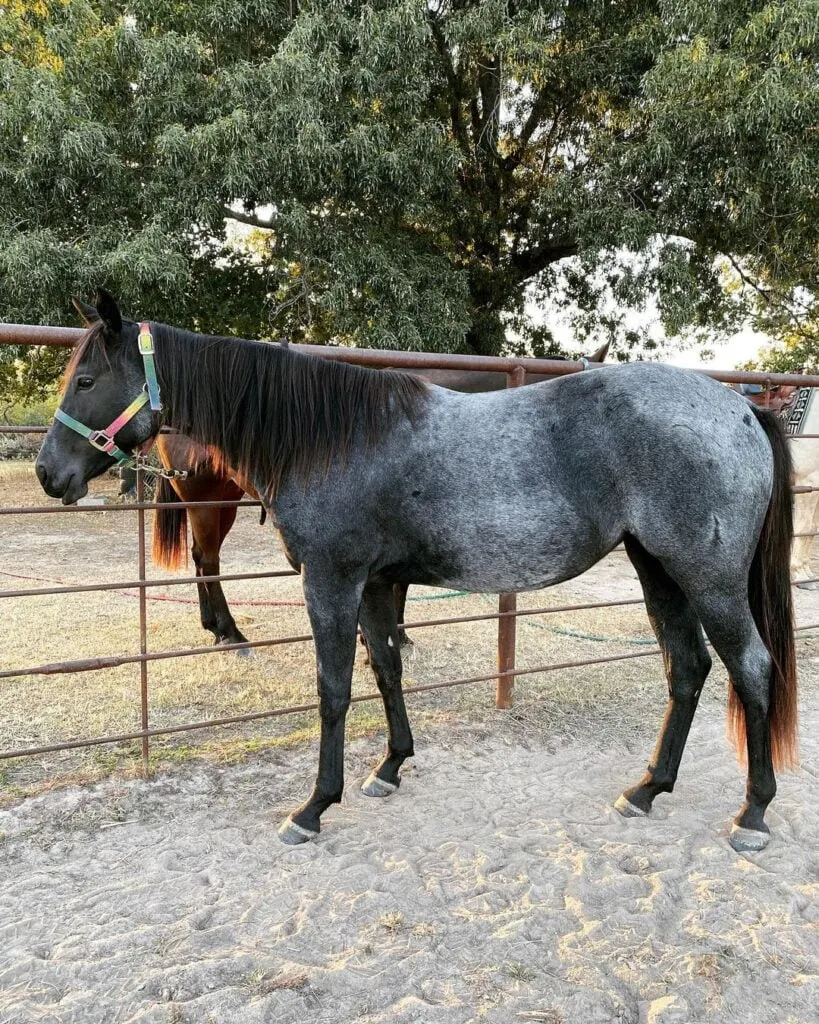
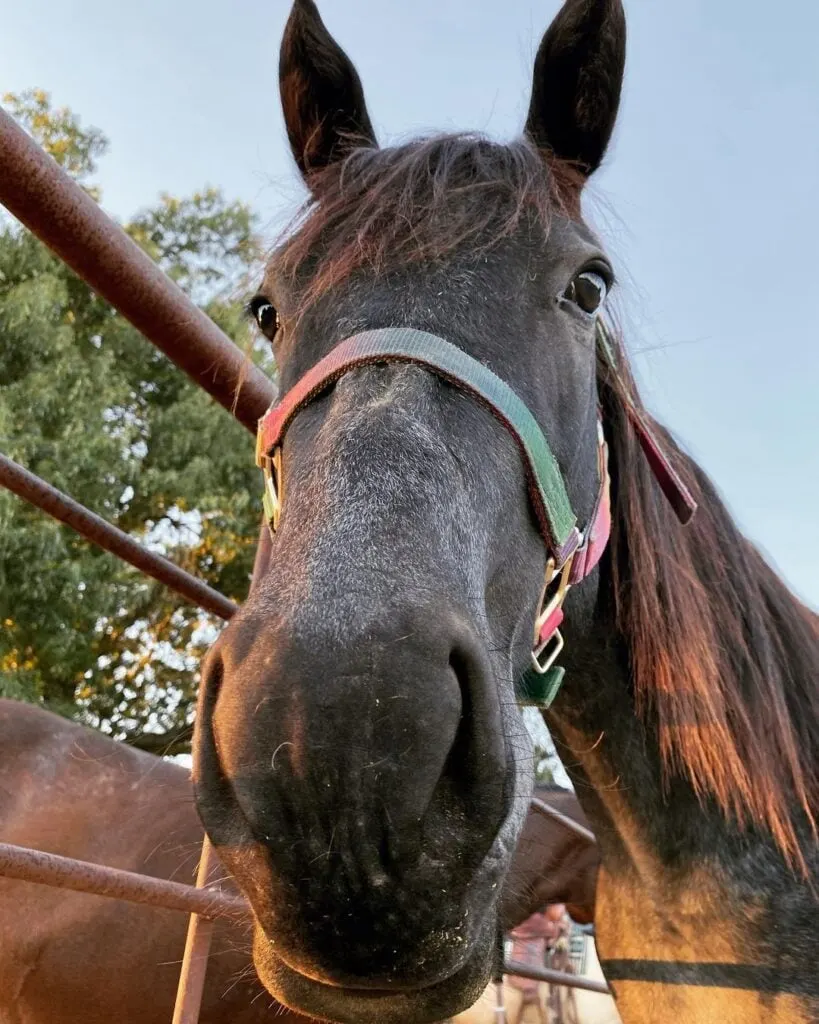
photos above by: Scout Gecks, IG: @roanstarequine – Images used with permission.
We’ve based these figures and the following infographics on an analysis of the horse market in Summer 2023. These numbers are based on our study of blue roan Quarter Horse classified ads on 3 leading horse sale sites.
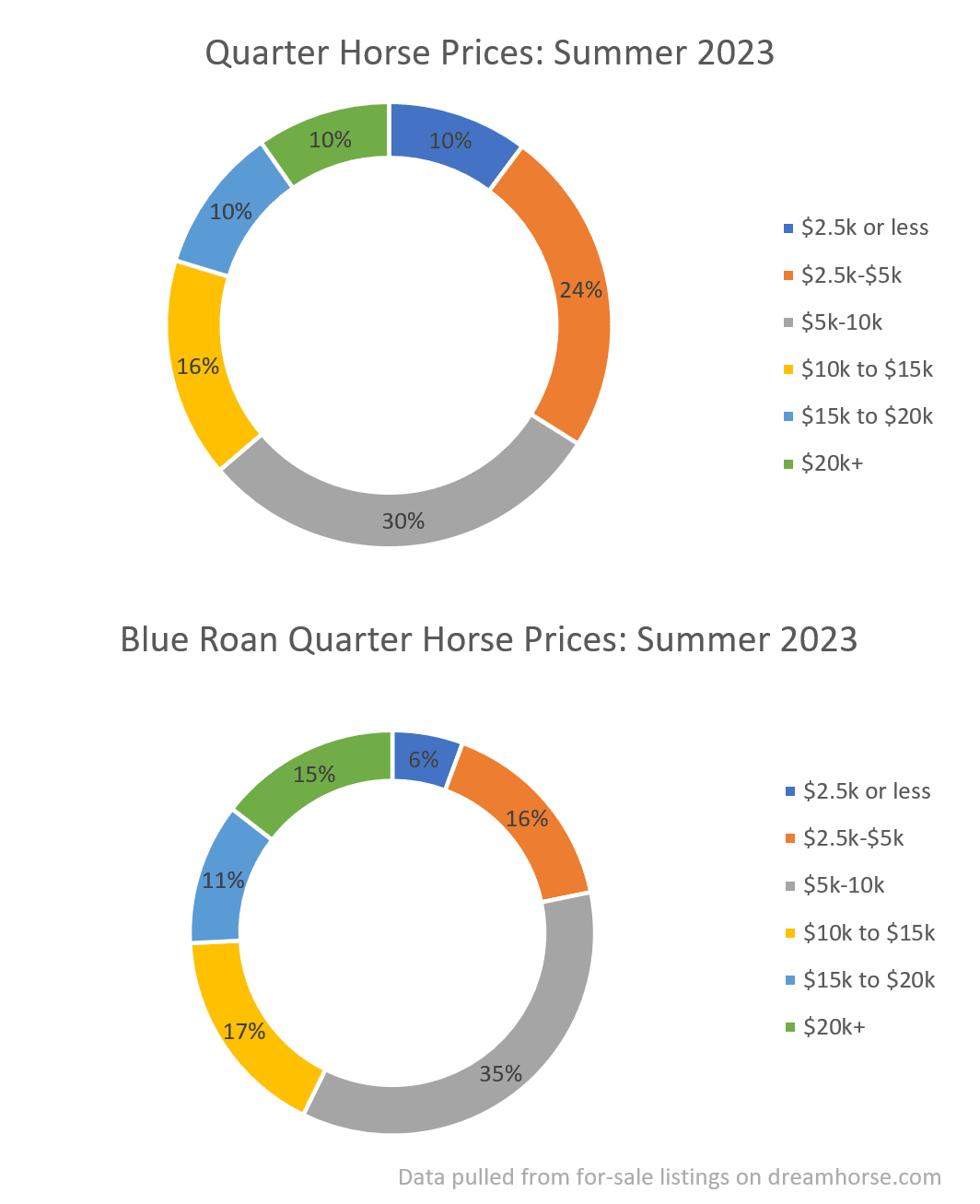
An Introduction to the Roan Color
Like Appaloosa or pinto horses, roan is a fur pigment pattern that can come in a variety of colors. A roan horse will vary in color depending on the base color which is being modified by the roan gene. There are two primary ways that roan is expressed: blue roan and strawberry roan.
🍓 Strawberry roan is the name of a horse color when the roan gene causes white hairs to grow on an otherwise brown coat. The pinkish hue of these horses has led to the name strawberry roan.
💎 Blue roan horses occur when the roan gene causes white hairs to grow on black-colored fur. From a distance, these horses appear grey. However, when viewed up close, they often take on a bluish-grey hue, which has led to the name blue roan.
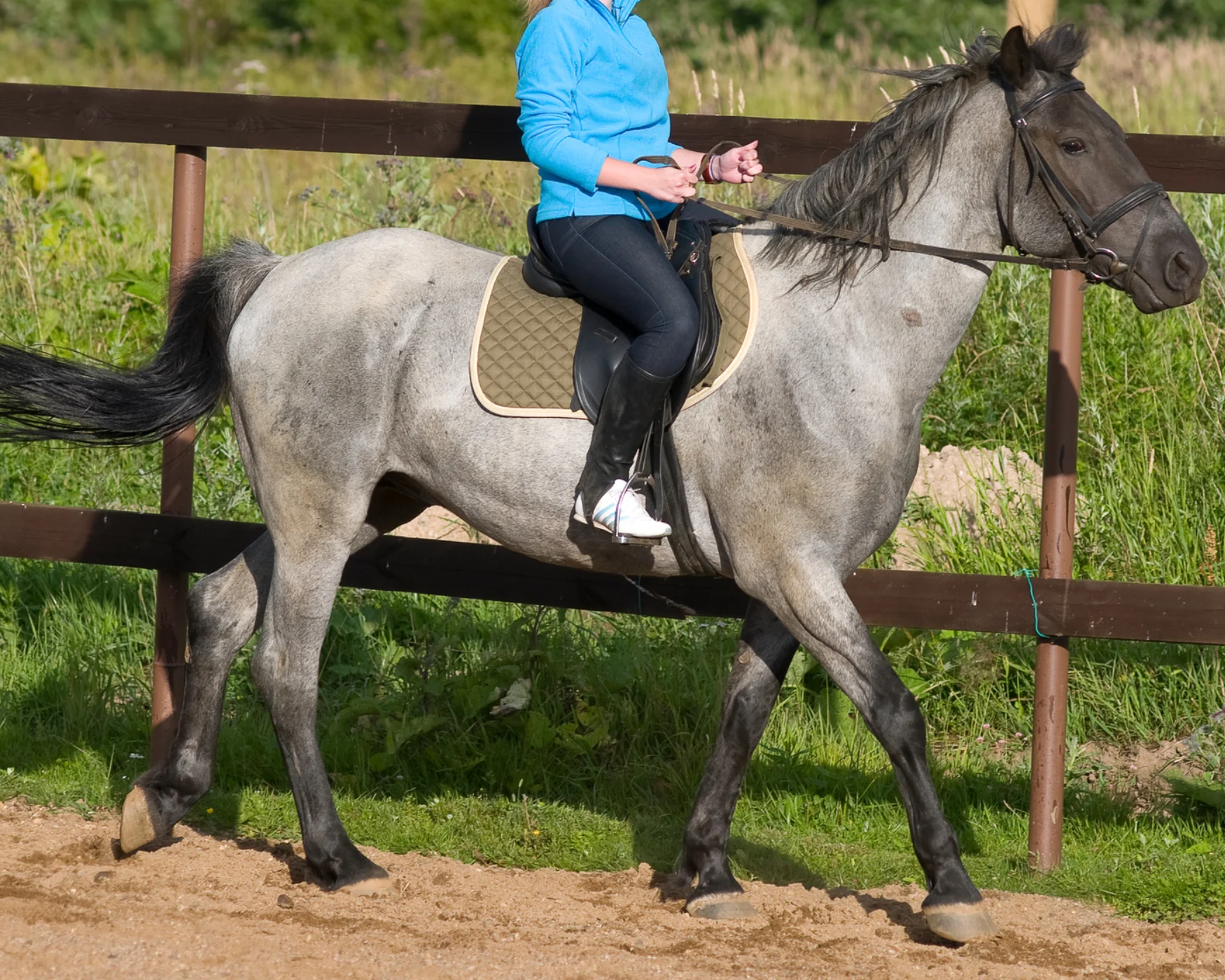
Although far less common, purple roans are also possible. A purple roan horse color occurs when the roan gene modifies a coat that has a brownish-black basecoat, such as a sunbleached black horse or a black buckskin horse.
Unusual Roan Colors
Because the roan gene occurs in many horse breeds that also have dilute colors, Appaloosa markings, or other rare horse colors, it’s possible for other versions of roan to appear.
For example, a Palomino horse can be a roan, as can buckskins, Grullas, and other dilute colors. These horses might be called champagne roans, gray roans, or other unique phrases. Right now, these variations are so rare they don’t really have a color name!
How to Tell Apart a Blue Roan From a Grey Horse
Blue roan horses are often confused with grey horses. Here are four ways to tell the difference between the two:
- The color is stable – grey horses change in color throughout their life. A horse that is a dark dapple grey at three years old is very likely to be nearly white by age seven. In contrast, a true blue roan horse will shed their winter coat and be the same color year in and year out.
- Black and white fur is mixed – look closely at the horse’s fur. You are likely looking at a roan horse if you see white hairs interspersed with black hairs. Grey horses tend to grey evenly, with each hair in their fur matching the same color. (Exception: flea-bitten grey horses. The flea-bitten grey pattern is easily recognizable and distinguished from a roan by the groupings of darker hairs instead of well-dispersed white and black hairs. See image below)
- Head and legs vs. body – True roan horses (strawberry roan, blue roan, and purple roan) usually have far more white hairs on their back, barrel, shoulders, and rump than on their face, neck, or legs. While grey horses tend to have some variation, this difference is pronounced on roan horses.
- Darker fur grows on areas where a wound has healed. – “Damage to the skin of a roan horse usually results in a patch of hair regrowth that has only the dark base color and not the intermixed white.” This is why you may see patches of dark hair on a roan horse.1
- 🧬 Genetics – While it’s possible to get a horse color DNA test to know a horse’s color for sure, it’s often easy to know simply by looking at the horse’s parents. If a horse has one grey parent and neither parent is roan, your potential blue roan is most likely a grey horse.
Using these five methods, you can easily tell the difference between a blue roan and a grey horse.
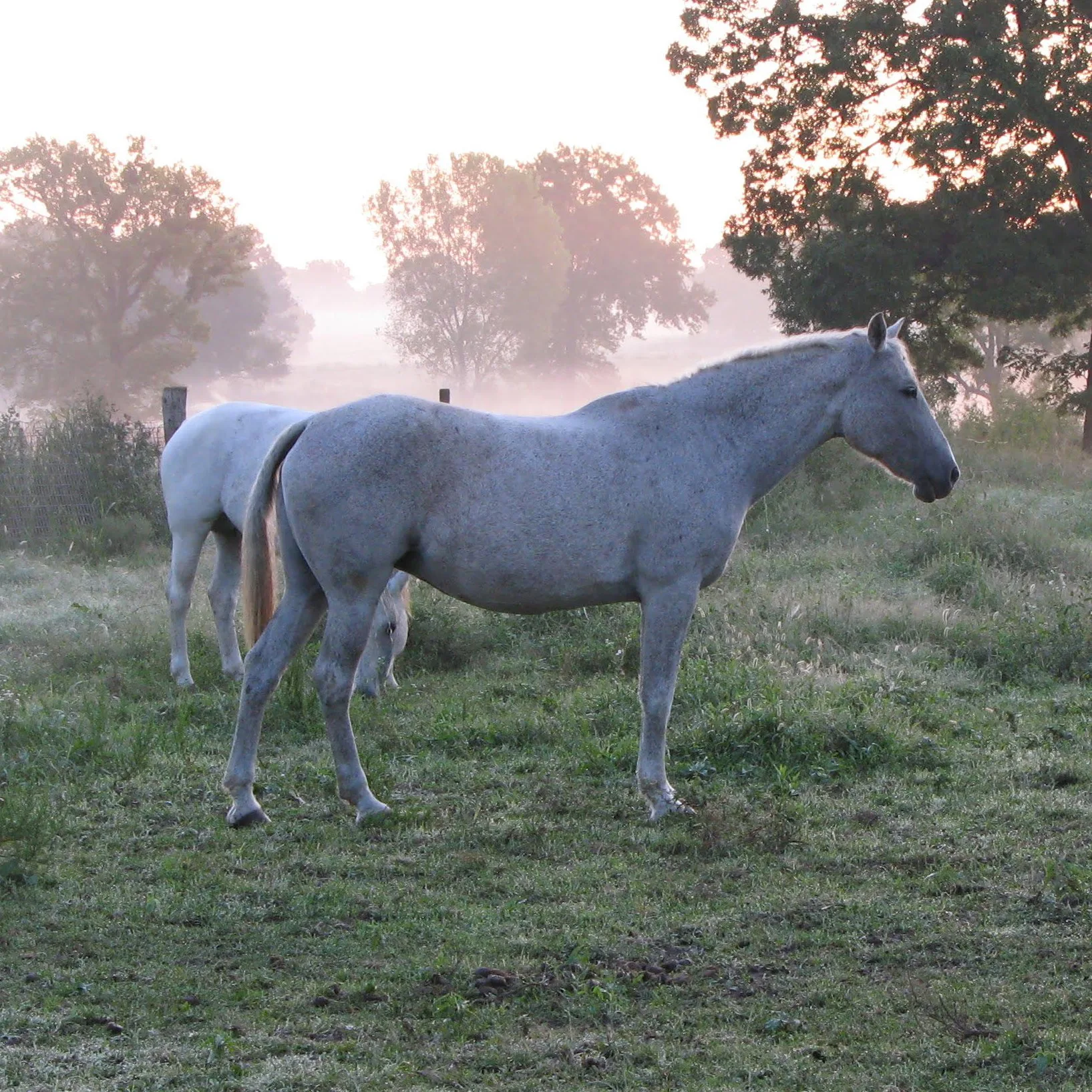
Rare Versus Common: Blue Roan Horses
Blue roan horses only occur in a few horse breeds – however, a few of these horse breeds are actually the most popular horse breeds in the world! So although horse breeds with blue roan are rare, blue roan horses are only unusual, not rare.
Roan Genetics
“Like the grey gene, roan is a dominant gene and therefore a roan cannot occur unless one or both of the parents is a roan.”2
Blue roan type appaloosas:
“The gene responsible for Leopard Appaloosa spotting may also produce a mottled roan in effect called ‘varnished roan’.”3 This type of roan is based in different genetics than typical roans, and is not yet well understood. “A roan type effect can be produced by other genes, which sometimes creates confusion and color designations for registration and in assigning genotypes.”4
How to get a blue roan horse
If you want a blue roan horse, there are two ways to get one: buying one or breeding one.
Breeding a blue roan horse
Unlike most rare horse breeds discussed on learning horses (like black buckskin or chocolate palomino) breeding a roan horse is relatively simple. This is because roan is a dominant gene. Any roan horse has a 50-50 chance of passing this gene along to their offspring – if the offspring gets the gene, it will be expressed in the coat color. For roan horses, there is no recessive way for the horse to carry the gene.
However, a potential pitfall for roan horse breeders is that if two roan horses are bred together, and the offspring conceived gets two roan genes, this double dose usually results in a lost pregnancy. Researchers aren’t exactly sure why, but homozygous (horses with two copies of the roan gene) roan horses typically do not survive. Breeding two roan horses together can potentially be dangerous for the foal. While there are some healthy blue roan horses with two copies of the roan gene (called homozygous) most of these foals are lost early in the mare’s pregnancy.5
The textbook example of a blue roan, below, is easy to recognize because the legs and head are darker than the body and dark markings on the body indicate where solid-color hair grows in areas where previous injuries occured.
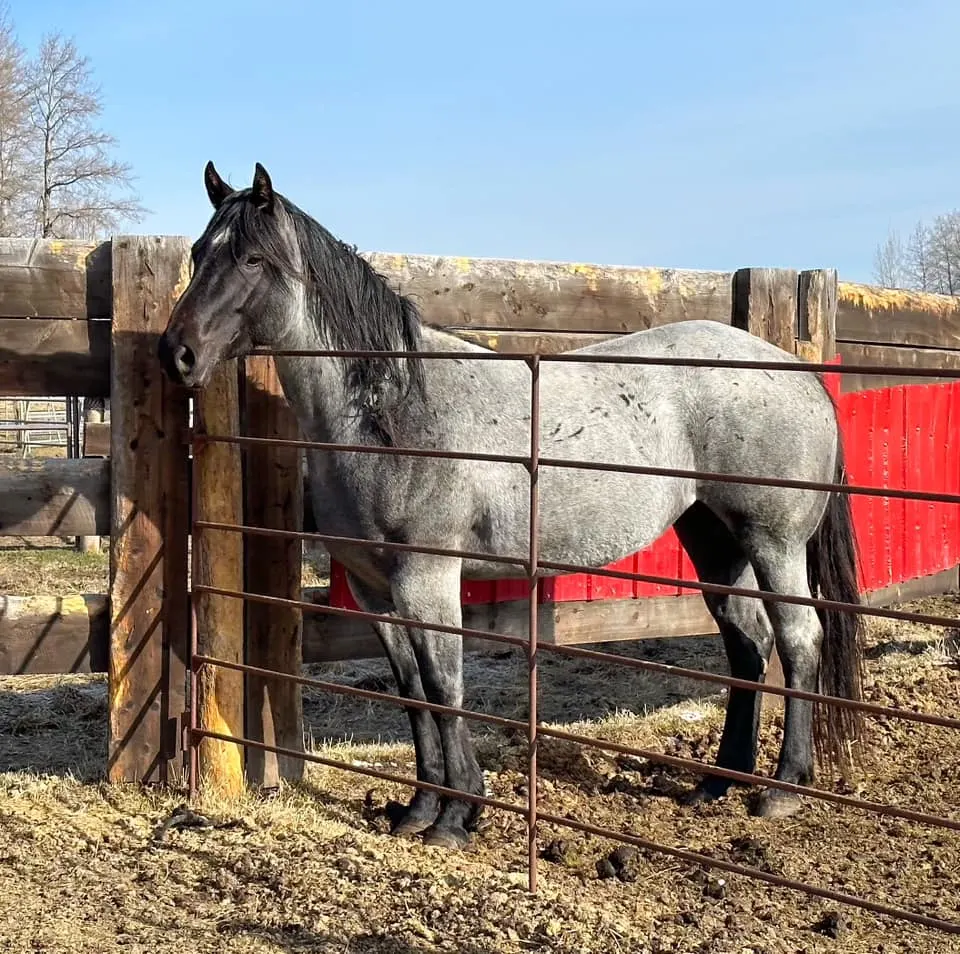
Buying a blue roan horse
Purchasing a blue roan horse is, generally, a much better way to get a blue roan horse. There’s no gambling on whether the horse will actually be blue roan or the fear that they’ll have health issues related to two copies of the roan gene.
Buying an adult blue roan horse allows you to buy a horse with the right level of training and the perfect temperament to be a good fit for you. If you haven’t bought a horse before, be sure to check out my questions to ask before buying a horse or my guide to buying your first horse.
Blue Roan Horse Breeds
Roan horses can be found in very diverse breeds including the Belgian Horse, Welsh Pony, Miniature Horse, Peruvian Paso, and the most popular breed in America, the Quarter Horse. Roan is also recognized in the Arabian Horse Registry. However, researchers believe the roan appearance in many Arabians may be due to a gene combination called Rabicano,3
Quarter Horse: Blue roan horses are relatively more common in the Quarter Horse breed than in some other breeds. The roan gene is present in the breed’s population, and blue roan, in particular, is a well-known and appreciated color among Quarter Horse enthusiasts. However, it is still less common than some other coat colors like chestnut, bay, or sorrel.
Arabian: Blue roans are extremely rare, if not non-existent, in the Arabian breed. Blue roan is not a recognized color within the purebred Arabian registry but Rabicano coloring, which is present in the Arabian registry, creates an effect that, to most, is very similar to blue roan.
Shetland Pony: Blue roan horses can be found in the Shetland Pony breed, but they are not as common as basic coat colors. While the roan gene does exist within the breed, they are considered relatively uncommon compared to other colors.
Welsh Pony: Blue roan is a fairly common color in Welsh Ponies, especially in some sections of the breed, like Section B and Section C. Welsh Ponies with the roan gene are often easy to find. Many pony admirers love them for their captivating coat color.
Belgian Draft: Blue roan horses can be found in the Belgian Draft breed, although they are not as common as the classic sorrel with a flaxen mane and tail. The striking appearance of a blue roan draft horse makes them stand out among draft breeds.
To Recap:
In conclusion, blue roan horses have a unique genetic makeup that gives them their stunning bluish-grey coat. While they are often mistaken for grey horses, there are ways to tell them apart, such as looking at the stability of their color, the mixture of black and white fur, and the location of white hairs on their body. Blue roan horses are relatively rare and makeup only a small percentage of Quarter Horses, but they are valued and can fetch a higher price than other coat colors.
Whether you want to breed a blue roan horse or purchase one, it’s important to understand their genetics and consider factors such as their temperament and training level.
- Coatesworth, J. (2016). Understanding the Horse’s Skin and Coat. United Kingdom: Crowood. [↩]
- Johnson, D., Johnson, S. (2014). How To Raise Horses: Everything You Need to Know. United Kingdom: Voyageur Press. [↩]
- Bailey, E. F., Brooks, S. A. (2020). Horse Genetics. United Kingdom: CABI. [↩] [↩]
- Bailey, E. F., Brooks, S. A. (2020). Horse Genetics. United Kingdom: CABI. [↩]
- Johnson, D., Johnson, S. (2014). How To Raise Horses: Everything You Need to Know. United Kingdom: Voyageur Press. [↩]

